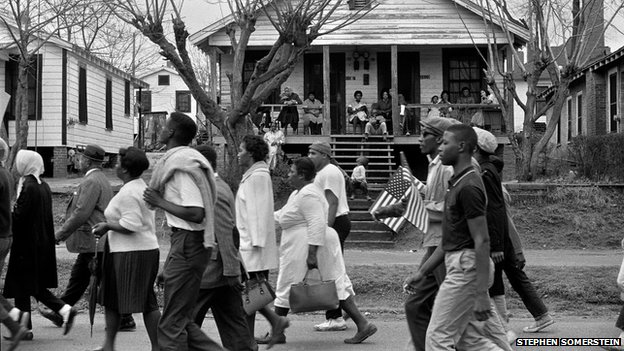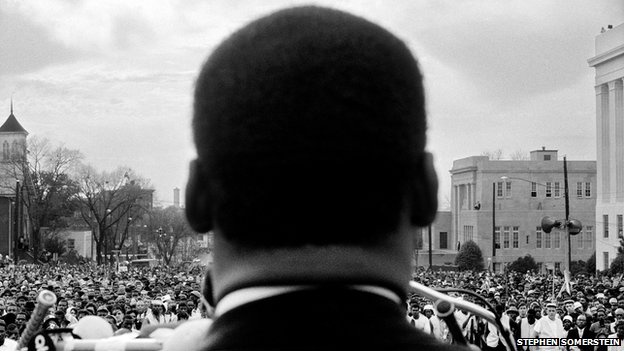18 January 2015
By Nick Bryant New York correspondent
MLK’s Selma march
captured by
Stephen Somerstein’s lens
Student newspaper editor Stephen Somerstein travelled to Alabama
to see Martin Luther King, Jr
Some of the most memorable news imagery of the post-war years came from the struggle for black equality, when photojournalism doubled as iconography.
So shocking were the front page pictures from Birmingham, Alabama, in the spring of 1963 of police German shepherd dogs tearing at the clothes and flesh of young protesters that it roused public support for the landmark 1964 Civil Rights Act that dismantled segregation in the south.
So grotesque was the sight of a column of civil rights protesters being bludgeoned by state troopers in Selma, Alabama, on what became known as “Bloody Sunday” that pressure for a new voting rights act became irresistible. Police brutality has often been the precursor to sweeping racial reform.
Much of the most evocative imagery came from seasoned pros – veterans of the civil rights beat. But an exhibition has opened at the New York Historical Society showcasing the work of a then novice.
Fifty years ago, Stephen Somerstein was at college in New York, and the editor of the student newspaper. Gathering together as many reels of film as he muster, he boarded a bus at the Port Authority Bus Terminal and headed south to chronicle the great social revolution of the age.
“When Dr. King called on Americans to join him on a massive protest march to Montgomery,” he recalls, “I knew that important, nation-changing history was unfolding and I wanted to capture its power and meaning with my camera.”
In March 1965, hundreds marched from Selma to the state capitol building in Montgomery, and Somerstein produced a photographic diary of that five-day cavalcade.
Granted unfettered access to figures like the Reverend Dr. Martin Luther King Jr., the legendary Rosa Parks, and the folk singer Joan Baez, the results are stunning. Judge for yourself.


